About
I am now writing a book based on the wanderings of Ulysses. The (Homer) Odyssey, that is to say, serves me as a ground plan… It is an epic of two races and at the same time the cycle of the human body as well as a little story of a day… It is also a sort of encyclopedia.
JAMES JOYCE on Ulysses
ULYSSES European Odyssey (UEO) was an epic project from 2022-2024 across 18 cities in 16 countries, producing artistic responses in public spaces to social and cultural themes identified in the 18 episodes of James Joyce’s Ulysses. At the same time, a cycle of 18 public symposia were held in each city to produce 309 questions (Ulysses, Episode 17) towards creating a new arts and society pamphlet for Europe, Will You Answer? 309 Questions from Europe. The project also had 30 artist residencies, some of which contributed to a new book, ULYSSES European Odyssey, alongside 18 new writing commissions, one writer from each city.
Read more
The original model for the artistic vision of ULYSSES European Odyssey 2020-2024 was first seeded and nourished in Enniskillen through AOB’s bio-festival work, viscerally interweaving aspects of the works of literary giants Samuel Beckett and Oscar Wilde (and Brian Friel in Donegal, Ireland) with the physical and metaphorical landscape of their childhood connections with place. In 2019, AOB Ireland was founded in preparation for a new J M Synge bio-festival on the Aran Islands for Galway European Capital of Culture 2020.
In December 2020, Dublin (with the Museum of Literature Ireland, MOLI) joined as the first city followed by Trieste, Budapest, Vilnius, Marseille, Berlin, San Sebastian (now replaced with the Galician city Lugo), Copenhagen, Istanbul, Cluj-Napoca, Leeuwarden, Eleusis, Oulu, Lisbon and Derry/Donegal.
In 2021 BNWP became the project’s overall Lead Partner and AOB became the project’s Artistic Lead Partner. In mid-2021, it was decided that the cities where the book was written – Trieste, Zurich, Paris – along with Dublin would provide four milestone meeting points across the 2 year project for the 18 partner consortium to gather and review the project’s progress. In early 2022, the European Commission’s Creative Europe Fund awarded the project €1.72m.
(poster reproduced with kind permission of Robert Berry)
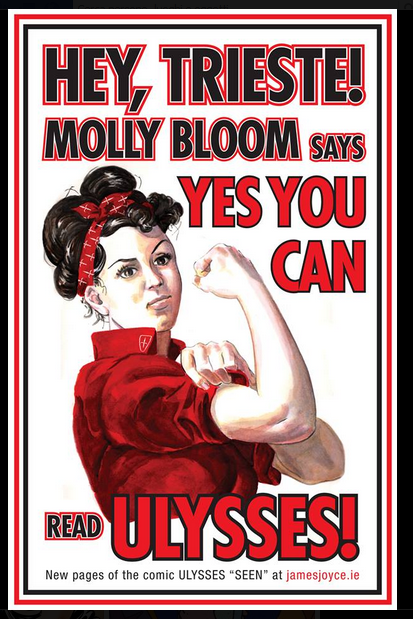
From 2022-2024, UEO unfolded across 18 cities in 16 countries, with each city partner producing responses under the following four programme strands:
- Artistic responses in public spaces to social and cultural themes identified in the 18 episodes of James Joyce’s Ulysses.
- 18 city mini-symposia to collate 309 questions in each partners’ city on the social urgency themes derived from the 18 episodes of James Joyce’s Ulysses.
- A new book comprising 18 new writing commissions by European writers from each city.
- 30 artists’ exchanges between all the city partners.
About the project
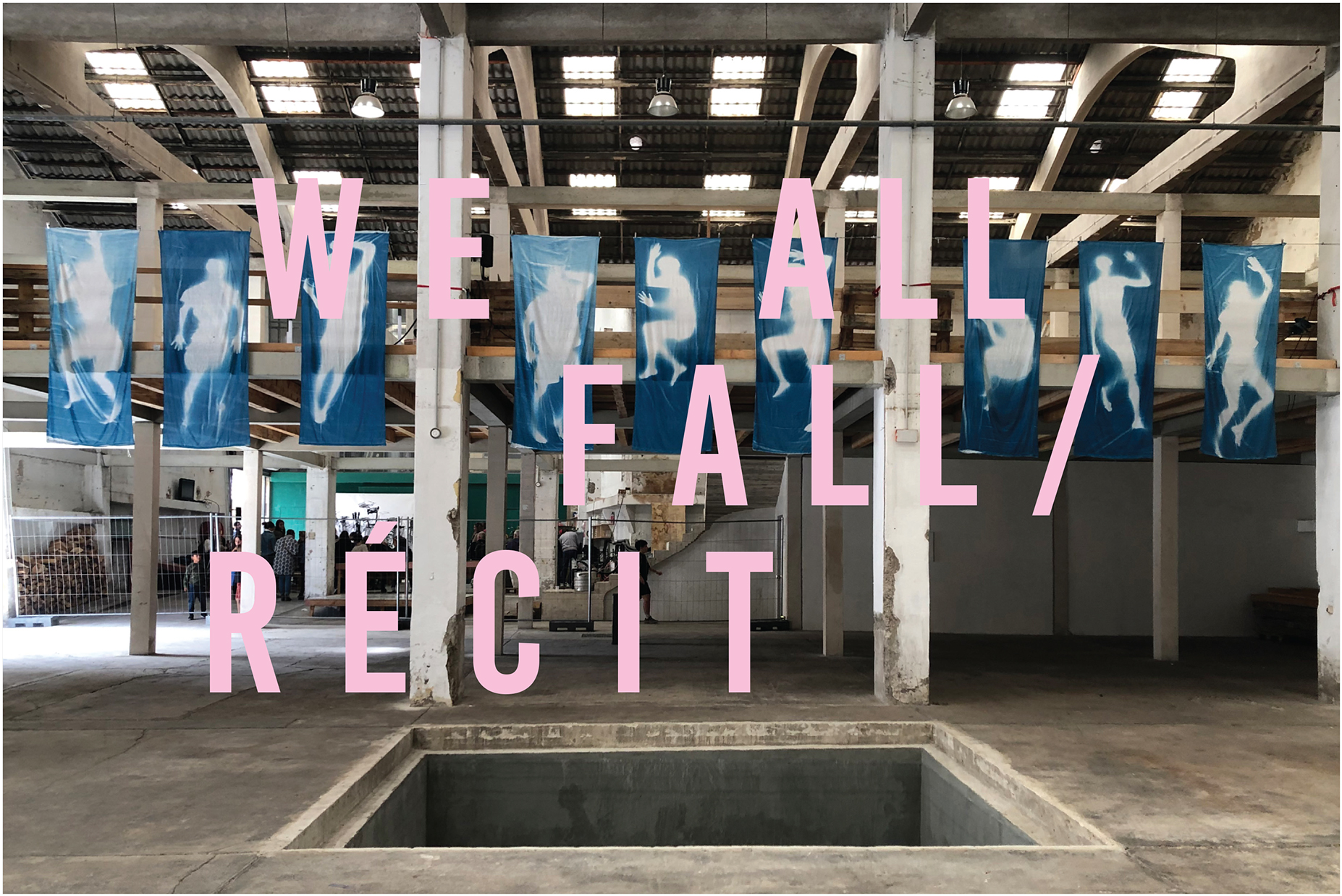
ULYSSES European Odyssey (UEO) was inspired by a European literary masterpiece, James Joyce’s Ulysses (published in 1922), which in turn was inspired by Homer’s Odyssey. Together the three are connected as projects that respond to seismic moments in human history: the Trojan War (c.1200 BC), The Great War and Spanish Flu (1914-20) and our own time of pandemic crisis and the current existential climate catastrophe threatening our planet.
(Photo: Marseille Episode V – Lotus Eaters)
UEO consisted of a new European network of 18 partners co-producing a single public project comprising 3 Acts of 18 scenes from 2022-24 across public spaces in 18 European cities of 16 different countries – Athens, Trieste, Vilnius, Budapest, Marseille, Paris, Berlin, Lugo, Copenhagen, Istanbul, Cluj-Napoca, Zurich, Leeuwarden, Eleusis, Oulu, Lisbon, Dublin & Derry/Donegal.
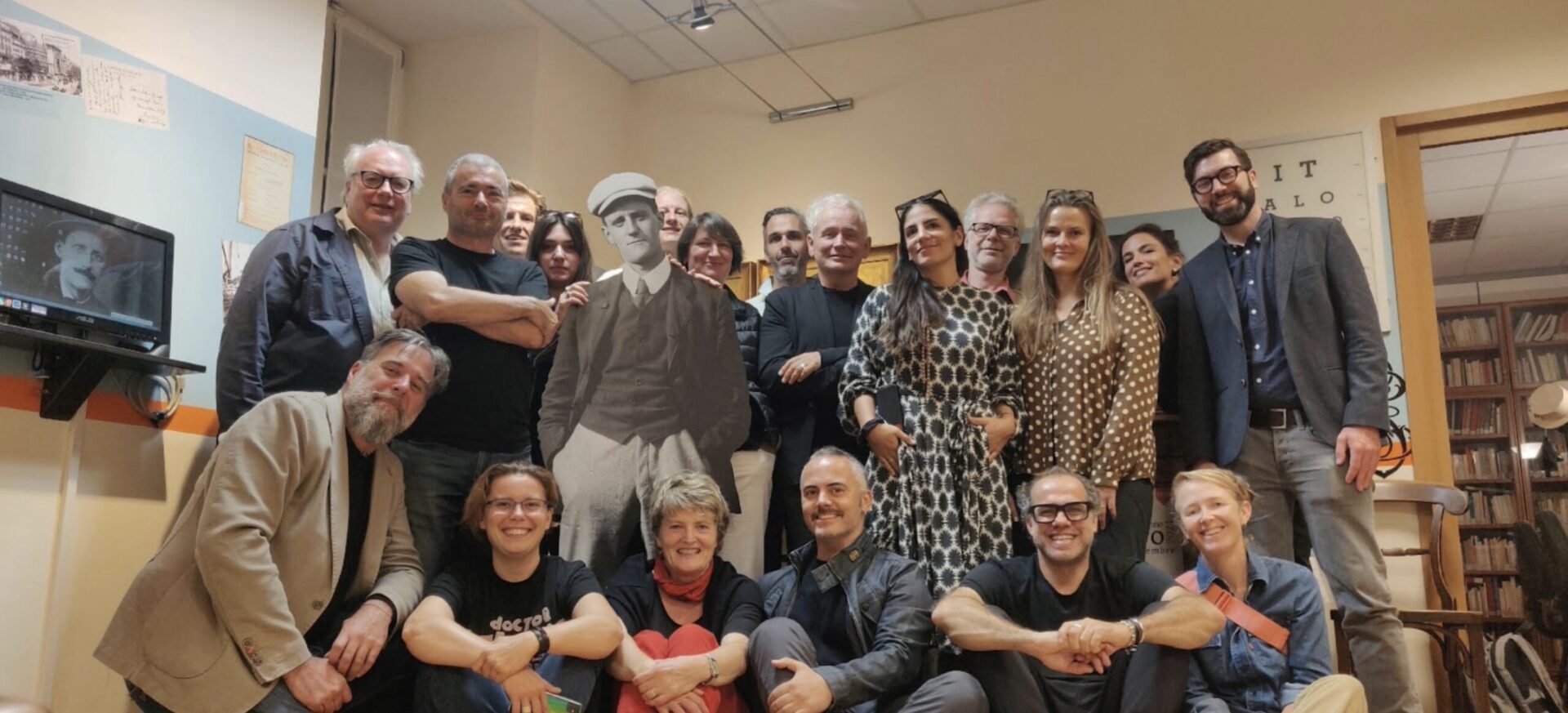
The project was a multi-disciplinary response, each city engaging with one of the novel’s episodes and with contemporary European social themes identified in that episode. There was a focus on each event engaging with a public space, inspired by Joyce’s belief in public space as a civilising influence. The project was shaped Into three Acts and 18 scenes:
Act I 2022 – Cities I – VI
Act II 2023 – Cities VII – XV
Act III 2024 – Cities XVI – XVIII
Each city partner across its 16 European countries also hosted a cross-sectoral symposium exploring the relationship between the city and its Ulysses inspired ARTS & SOCIETY theme – migration, democracy, mental health, environmental pollution, social co-existence, sexual equality and freedom of speech, amongst others.
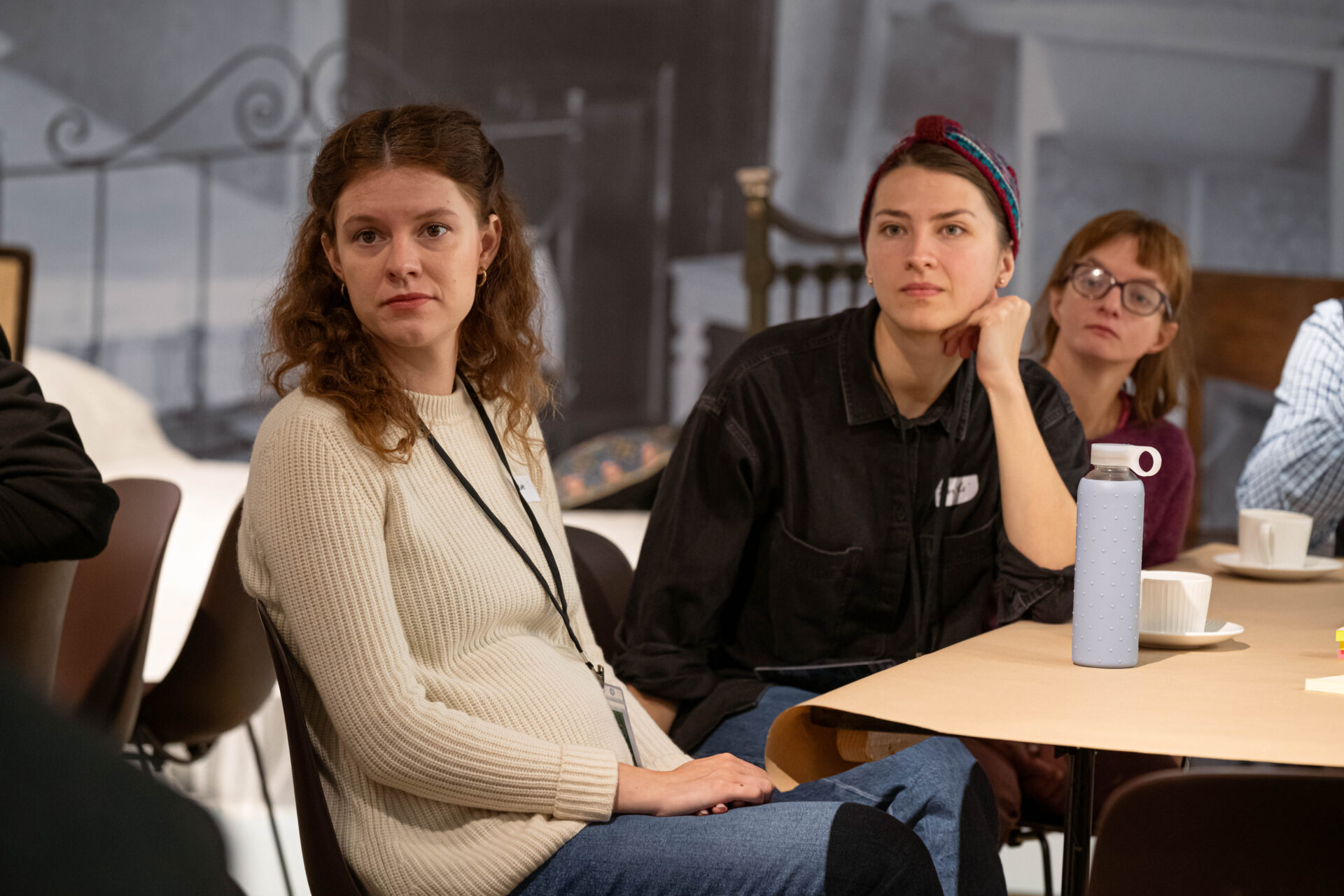
(Photo: Athens Episode I – Telemachus)
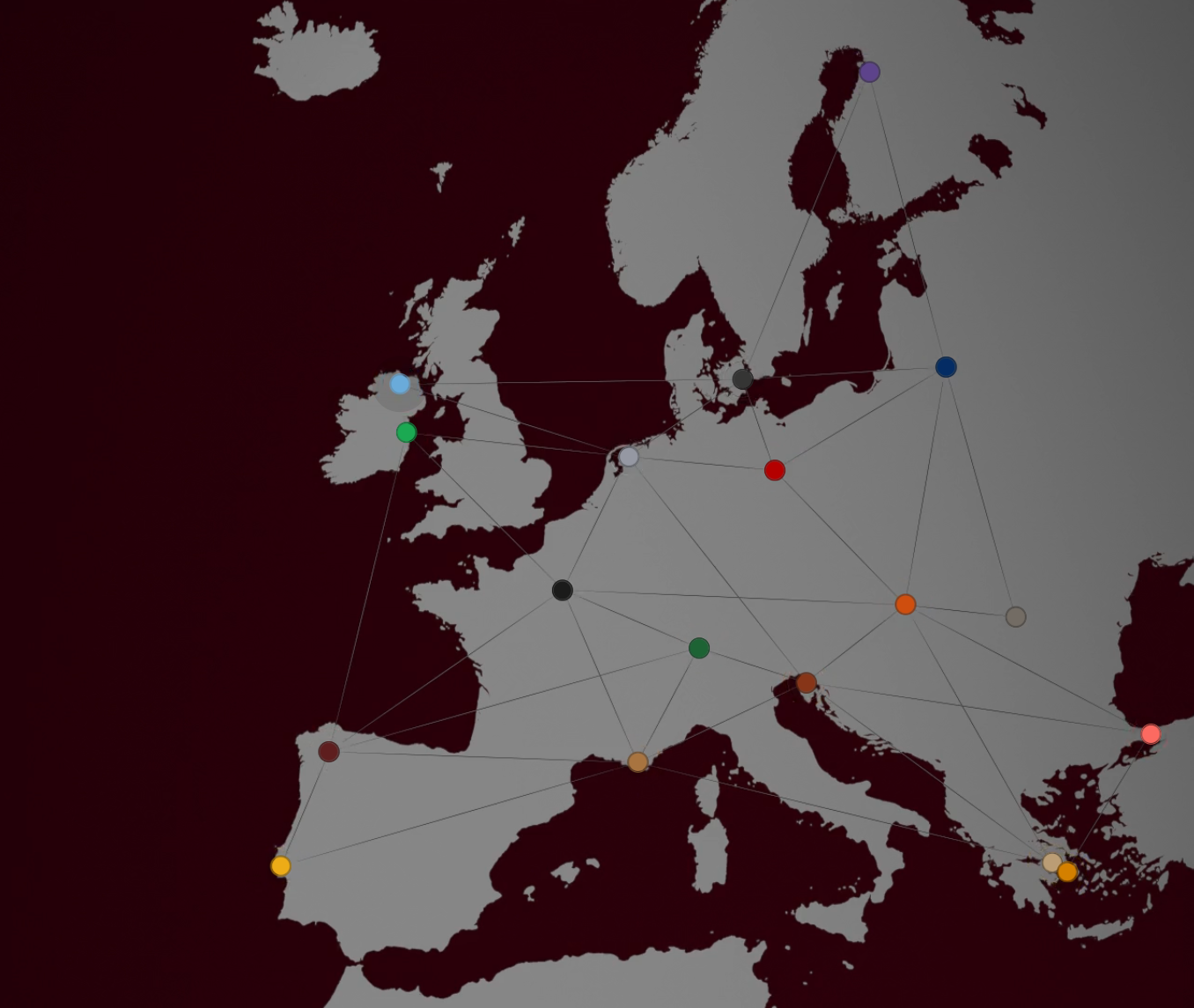
An exchange between cities of 30 emerging artists also occurred. The project will culminate in the publication of a book, ULYSSES European Odyssey, for which 18 innovative writers (one from each city/region) were commissioned to write a response to their city and theme.
The project design of pan-European collaboration inspired by a single work of art brought together different sectors – museums, a cultural tourism body, festivals, theatre venues, filmmakers and civic government – across different art-forms – photography, gastronomy, social arts therapy, public art, environmental arts, digital art and the dramatic monologue – with different levels of scale and experience.
UEO PROJECT LAUNCH
SING TO US O MUSE – An Artists’ Blessing
We decided on a different approach, rather than the standard press release and public event, as the launch of our project and to that end we invited two singers, one from Athens, Chrysoula Kechiagioglou, and one from Dublin, Liam Ó Maonlaí – representing the Homer and Joyce cities and the opening and closing countries of the project – to come together on Strefi Hill in Athens on 22-9-22 to jointly sing a ballad, in Gaelic and Greek, to ‘artistically bless’ the project for our two year journey to 18 cities. This took place two days before the first event was held at the Odyssea Centre in Athens. The title SING TO US O MUSE echoes the opening lines of Homer’s Odyssey. The film, directed by Alan Gilsenan, blended images of the environs on a rose-tinted dawn around Joyce’s Sandymount Martello tower in Dublin.
SING TO US O MUSE: An artists’ blessing to launch ULYSSES European Odyssey.
SINGERS Liam Ó Maonlaí and Chrysoula Kechagioglou PHOTO Alan Gilsenan
LOCATION Strefi Hill, Athens
PRODUCED by ARTS OVER BORDERS
ULYSSES European Odyssey was inspired not only by Joyce’s European masterpiece, but also by his own schema to his book that he initially circulated among close friends. Joyce wrote two schemas; his Linati schema in 1920 to assist Carlo Linati understand the fundamental structure of the book and his Gilbert schema in November 1921 to help his friend, Valery Larbaud, prepare a public lecture on the novel.
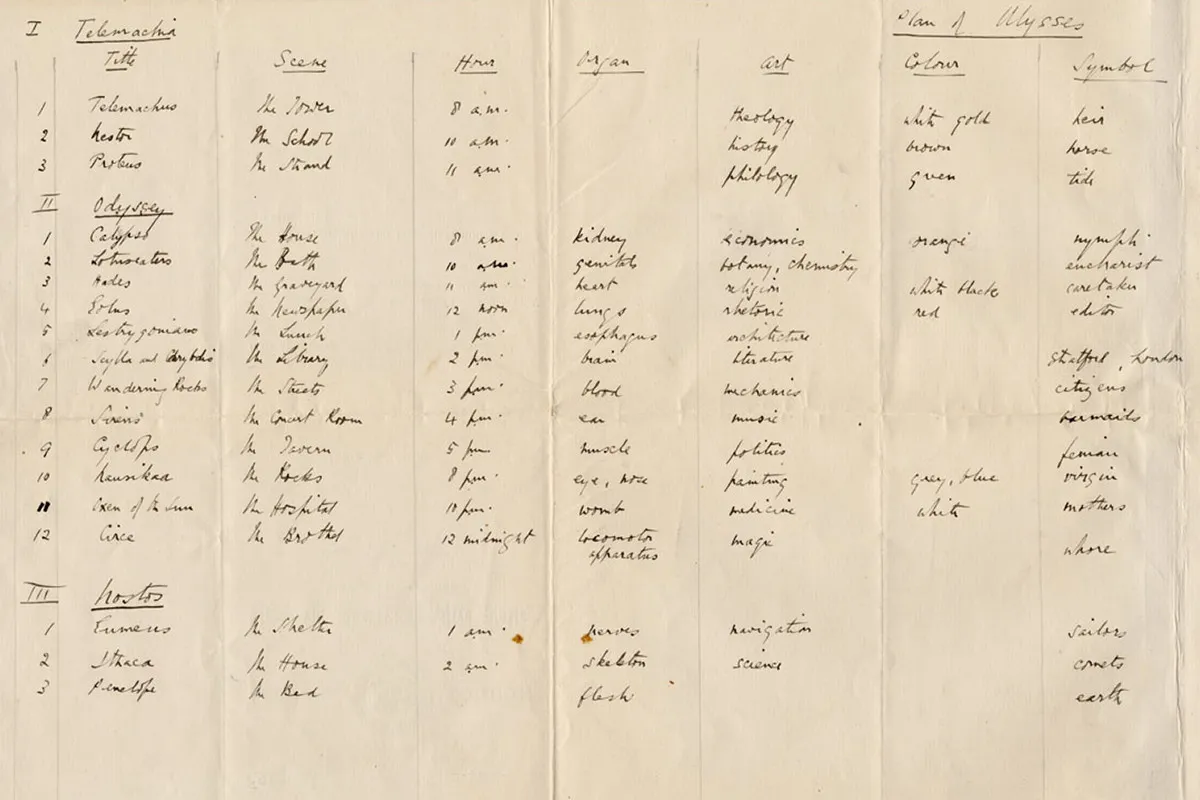
In both schemas Joyce identified city settings, times of the day, colours, bodily organs, scientific and artistic disciplines and symbols for each episode. He also identified the chapter his episodes linked to in Homer’s Odyssey. In the Gilbert schema he also gave each episode a ‘technique’, ranging from narrative to monologue, narcissism to hallucination.
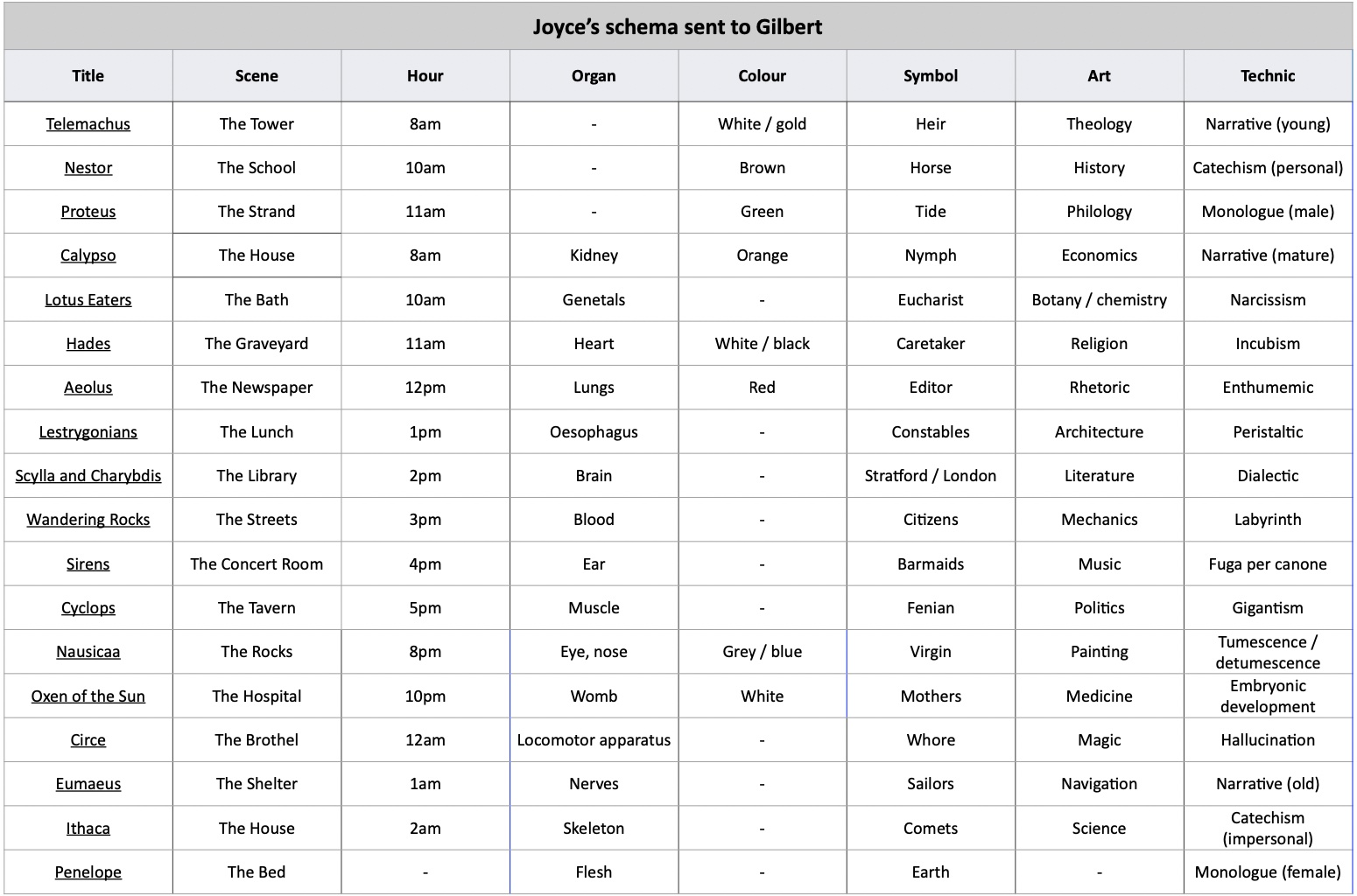
(Joyce’s Linati schema can be found here)
ARTS OVER BORDERS took both schemas as inspiration to create its own 21ST century schema as a blueprint for the ULYSSES European Odyssey (UEO) project, replacing Joyce’s scenes with European cities, times of the day with months of the year, science & arts with contemporary art forms. Crucially, and assisted by Brave New World Producties, we added a social issues column which explored the themes in each episode of the novel and developed them into modern day European (global) urgencies. This helped shape the eventual structure of the overall project, particularly in identifying the best cities to match the issues.
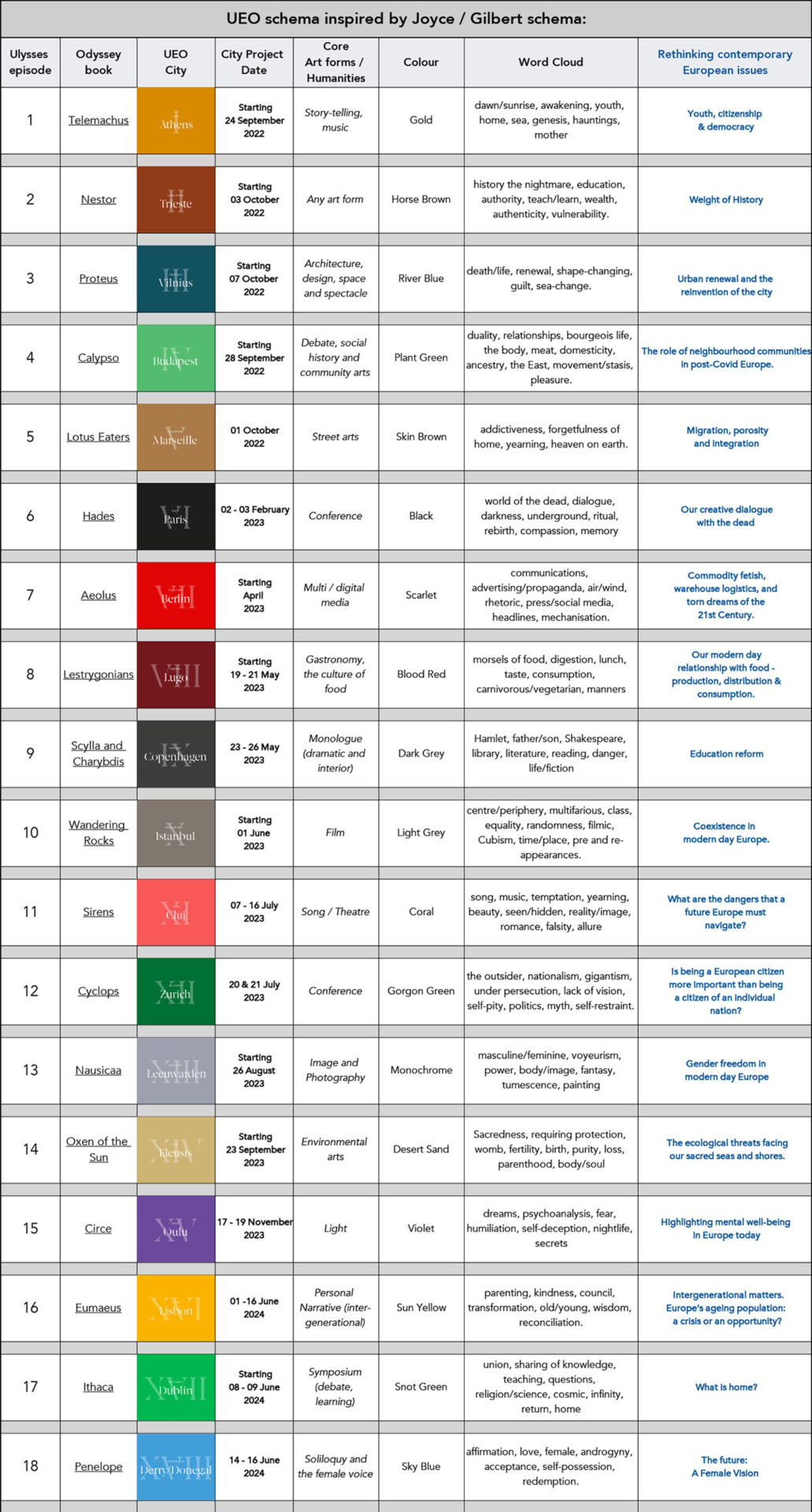
Thereby, Ulysses, a 100-year-old novel started to reveal itself in a new, compelling way, offering a rich and provocative modern day relevance. Subsequently, a broad range of organisations were sought to reflect and best realise this new UEO schema. Out of a number of meetings led by the Lead Partner BNWP, recommendations, new contacts for new cities and partners were brought together.
The contemporary European urgencies explored during UEO were:
ACT I 2022
- Youth, citizenship & democracy – ATHENS
- Weight of history – TRIESTE
- Urban renewal and the reinvention of the city – VILNIUS
- The role of neighbourhood communities in post-Covid Europe – BUDAPEST
- Migration, porosity and integration – MARSEILLE
- Our creative dialogue with the dead – PARIS
ACT II 2023
- Commodity fetish, warehouse logistics and torn dreams of the 21st century – BERLIN
- Our modern day relationship with food – production, distribution, consumption – LUGO
- Education reform – COPENHAGEN
- Co-existence – ISTANBUL
- What are the dangers that a future Europe must navigate? – CLUJ-NAPOCA
- Is being a European citizen more important than being a citizen of an individual nation? – ZURICH
- Gender & Sexual identity – LEEUWARDEN
- The ecological challenges facing our sacred seas and shores – ELEUSIS
- Mental well-being in Europe today – OULU
ACT III 2024
- Europe’s ageing population: a crisis or an opportunity? – LISBON
- What is home? – DUBLIN
- The future: A female vision – DERRY/DONEGAL
These Arts & Society contemporary European themes – which were the focus of each city’s mini-symposium – will result in a pamphlet, Will You Answer? 309 Questions from Europe (as inspired by Episode 17 of Ulysses) regarding the role the Arts could play in society for a better future Europe. The pamphlet will be published in the Autumn of 2024 and be digitally available on this website.
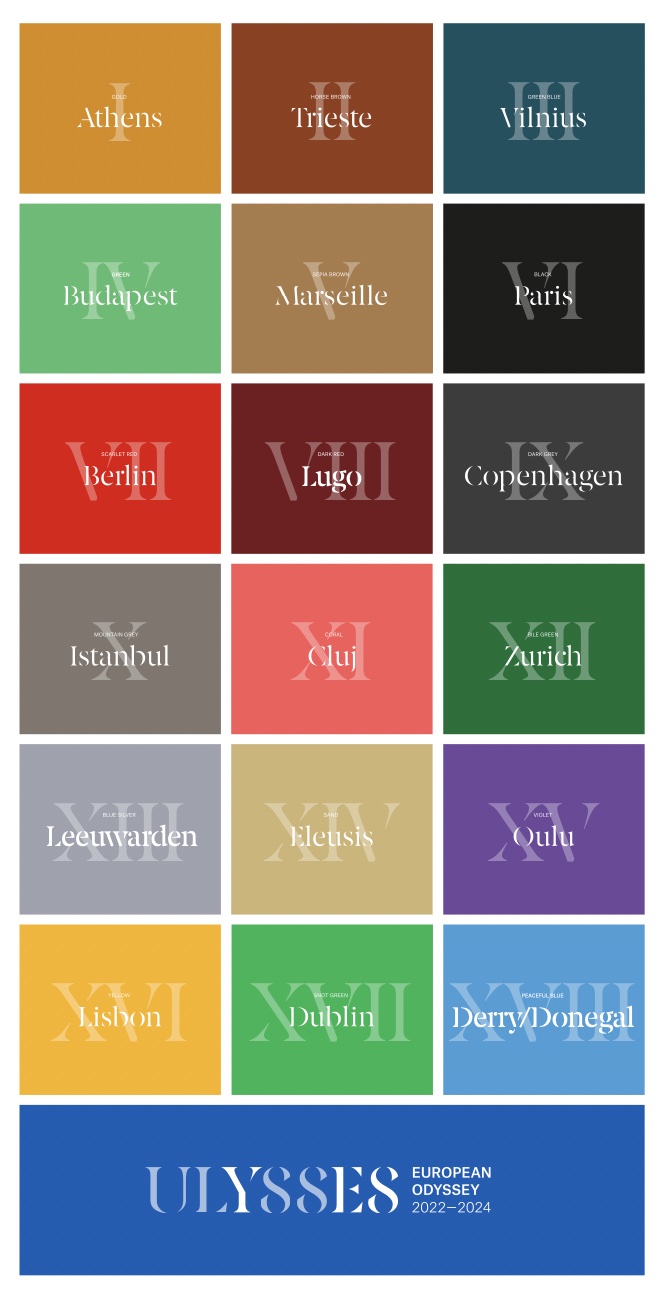
The colours used on the website are based on Joyce’s own colours.
In his Ulysses schema Joyce proposed a different colour for each of his 18 episodes, except two. Each city is therefore presented according to Joyce’s colour schema for his book.
The project’s colour logo is a combined artistic vision of James Joyce’s choice of blue from the Greek flag (Homer) for his book cover and his ‘snot green’ description of the Irish Sea in the novel’s opening. The word YES is highlighted echoing the last words of the novel.





